Las Vegas and Other Cities See Drastic Water Cuts in New Feds Proposal
Posted on: April 11, 2023, 06:02h.
Last updated on: April 12, 2023, 12:30h.
Federal officials on Tuesday said they would enact one of two emergency conservation options by this summer to address “unprecedented hydrologic conditions” threatening the two largest reservoirs in the world, the Glen Canyon and Hoover dams.
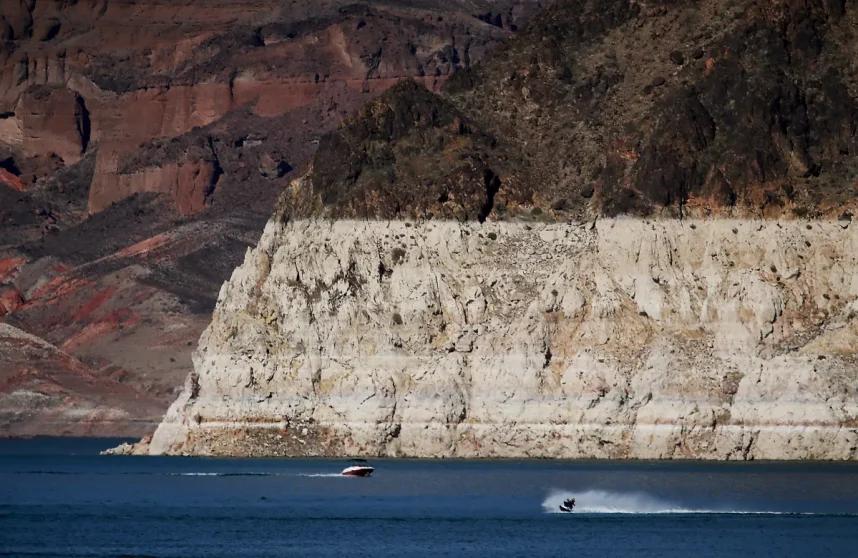
Laid out in a new draft environmental impact statement from the US Department of Interior’s Bureau of Reclamation, these options are designed to stop the Hoover and Glen Canyon dams from hitting dead pool — the depth at which gravity no longer allows them to release water, and therefore, produce electricity.
The options are as follows:
- Reduce the water released from the Glen Canyon Dam based on water rights, or
- Spread the cuts evenly across all users of Colorado River water.
Under the first option, Las Vegas, LA, and Phoenix would feel the overwhelming majority of the water cuts, since these cities have a lower-priority claim to the water than farmers and tribes. In addition, Las Vegas would suffer disproportionately, because 90% of its drinking water comes from the river, whereas only 40% of Phoenix’s water — and 50% of LA’s — does.
Option 2 would mean more cuts for agriculture in California — which has the most senior water rights — and would undoubtedly prompt legal challenges from the state.
Under both scenarios, states, farms, and tribes could be forced to cut an additional 2.1 million total acre-feet of water — roughly 684 billion gallons — from their Colorado River allotment in 2024, on top of conservation agreements struck in previous years.
The Interior Department is expected to make a final decision on the cuts — including how and when they would be implemented — this summer.
Drought Resistance
The Colorado River provides water and electricity to more than 40 million Americans in seven states: California, Nevada, Arizona, Utah, Wyoming, Colorado, and New Mexico. It also supplies water to two states in Mexico, and to 30 tribal nations.
But overuse, combined with a 23-year megadrought, have decimated the water levels at Lakes Mead and Powell. Lake Mead, currently 28% full, sits about 150 feet above dead pool, and — despite recent rains — is still expected to drop another 30 feet in the next two years. Lake Powell, at 26% full, is 154 feet above dead pool.
“Failure is not an option,” Interior Dept. deputy secretary Tommy Beaudreau said during a press conference at Hoover Dam near Las Vegas, where Beaudreau pointed out Lake Mead’s dramatic bathtub ring behind him. The ring, composed mostly of previously dissolved calcium deposits, provides the clearest indication possible of much the water levels there have fallen since 1999, the last time reservoir was 100% full.
Tuesday began a 45-day period during which written comments addressing the SEIS will be accepted. The Interior Department is particularly interested in specific recommendations regarding the analyses or alternatives that can be considered and potentially integrated into the SEIS.
Those comments may be submitted, until May 30, by emailing CRinterimops@usbr.gov, by calling (602) 609-6739, or by writing to Reclamation, 2007 Interim Guidelines SEIS Project Manager, Upper Colorado Basin Region, 125 South State St., Suite 800, Salt Late City, UT 84138.
Related News Articles
Filling Lake Mead with Mississippi River Water No Longer a Pipe Dream
Colorado River Snowpack Reaches 158%, Easing Las Vegas Drought
Nevada, Southwest Faces Unprecedented Water Restrictions
VEGAS MYTHS BUSTED: Las Vegas Was Built on Barren Desert Terrain
Most Popular
Sphere Threat Prompts Dolan to End Oak View Agreement
MGM Springfield Casino Evacuated Following Weekend Blaze
This Pizza & Wings Costs $653 at Allegiant VIP Box in Vegas!
Atlantic City Casinos Experience Haunting October as Gaming Win Falls 8.5%
Most Commented
-
VEGAS MYTHS RE-BUSTED: Casinos Pump in Extra Oxygen
— November 15, 2024 — 4 Comments -
Chukchansi Gold Casino Hit with Protests Against Disenrollment
— October 21, 2024 — 3 Comments -
VEGAS MYTHS RE-BUSTED: The Final Resting Place of Whiskey Pete
— October 25, 2024 — 3 Comments
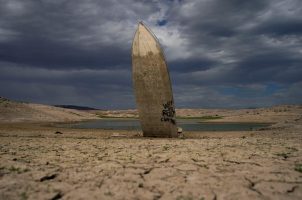
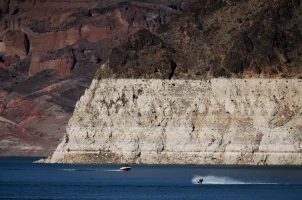
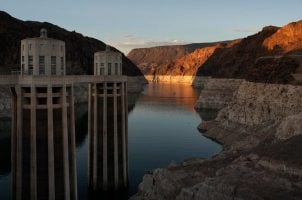
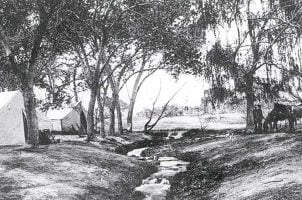












No comments yet